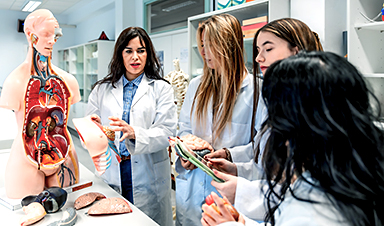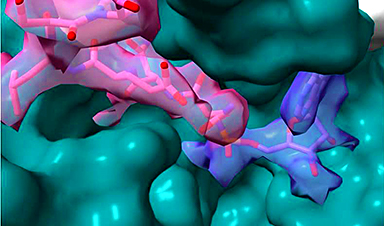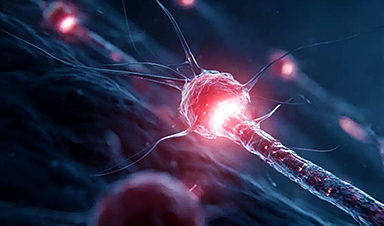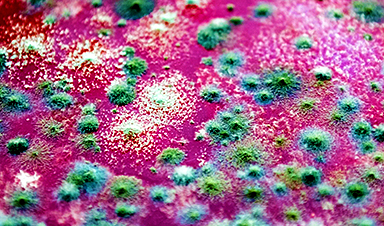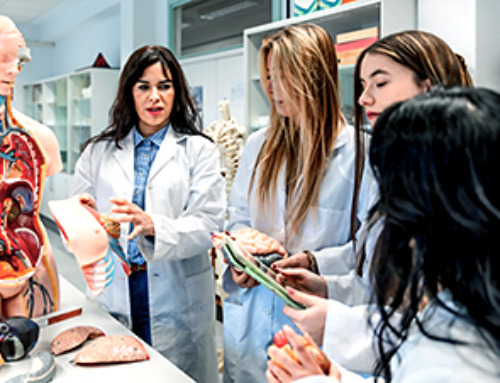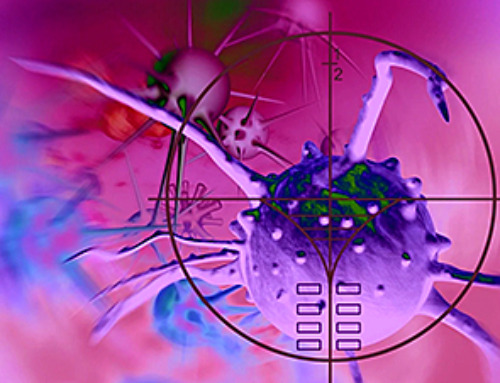A research team from Johns Hopkins Medicine and Johns Hopkins University has developed a machine-learning (ML) tool capable of predicting who has the highest probability of being naturally resistant to COVID-19 infection despite being exposed to SARS-CoV-2, the virus that causes it.
The study, published this week in PLOS One, aims to better understand the factors that influence COVID-19 resistance.
“If we can identify which people are naturally able to avoid infection by SARS-CoV-2, we may be able to learn — in addition to societal and behavioral factors — which genetic and environmental differences influence their defense against the virus,” said Karen (Kai-Wen) Yang, lead study author and a biomedical engineering graduate student in the Translational Informatics Research and Innovation Lab at Johns Hopkins University, in the press release. “That insight could lead to new preventive measures and more highly targeted treatments.”
To develop their model, the researchers gathered data from the Johns Hopkins COVID-19 Precision Medicine Analytics Platform Registry (JH-CROWN), which contains information for patients with a suspected or confirmed SARS-CoV-2 infection seen within the Johns Hopkins Health System, the press release states.
From this information, the research team selected patients who had received a COVID-19 test between June 10, 2020, and Dec. 15, 2020, and reported “potential exposure to the virus” as the reason for testing. Dec. 15 was chosen as the end date because it was just before large-scale COVID-19 vaccination efforts began in the US, which allowed researchers to avoid the confounding effects of vaccines, rather than natural resistance, on preventing COVID-19 infection.
The final cohort comprised 8,536 study participants who were divided into two groups: those who either did not share a household with any COVID-19 patients or whose household had 10 or more patients, and those who shared a residence with 10 or fewer people, with at least one being a COVID-19 patient.
The first group, consisting of 8,476 participants, served as the training and initial testing test, while the remaining 60 participants were grouped into a Household Index (HHI) Set, which served as a separate testing set.
EHR data from the cohort was analyzed using the Maximal-frequent All-confident pattern Selection Pattern-based Clustering (MASPC) algorithm, which combines patient demographic information, the relevant International Statistical Classification of Diseases and Related Health Problems (ICD) medical diagnostic codes, outpatient medication orders, and the number of comorbidities present for each patient.
“We hypothesized that MASPC would enable us to cluster patients with similar patterns in their data to define them as resistant and non-resistant to SARS-CoV-2, and with the hope that the algorithm would learn with each analysis how to improve the accuracy and reliability of future assignments,” explained co-senior study author Stuart Ray, MD, vice chair of medicine for data integrity and analytics, and professor of medicine at the Johns Hopkins University School of Medicine, in the press release. “This initial study using JH-CROWN data was conducted to give life to that hypothesis, a proof-of-concept trial of our statistical model to show that resistance to COVID-19 might be predictable based [on] a patient’s clinical and demographic profile.”
The researchers were able to identify 56 of these patterns, five of which captured who was most likely exposed to the virus.
“Looking for these patterns in HHI Set — the individuals most likely to have been exposed to SARS-CoV-2 in close quarters — and then statistically analyzing the results, our model’s best performance was 0.61,” says Ray. “Since a score of 0.5 shows only chance association between the prediction and reality, and 1 is 100% association, this shows the model has promise as a tool for identifying people with COVID-19 resistance who can be further studied.”
The researchers noted that the study has multiple limitations, such as potential bias from the self-reporting of COVID-19 exposure by participants, the small number of participants in the HHI group, the short timeframe of the study, and the possibility that participants may have taken tests for SARS-CoV-2 using home kits or at facilities outside the Johns Hopkins system, which would not have been recorded in the JH-CROWN database.
News
Repurposed drugs could calm the immune system’s response to nanomedicine
An international study led by researchers at the University of Colorado Anschutz Medical Campus has identified a promising strategy to enhance the safety of nanomedicines, advanced therapies often used in cancer and vaccine treatments, [...]
Nano-Enhanced Hydrogel Strategies for Cartilage Repair
A recent article in Engineering describes the development of a protein-based nanocomposite hydrogel designed to deliver two therapeutic agents—dexamethasone (Dex) and kartogenin (KGN)—to support cartilage repair. The hydrogel is engineered to modulate immune responses and promote [...]
New Cancer Drug Blocks Tumors Without Debilitating Side Effects
A new drug targets RAS-PI3Kα pathways without harmful side effects. It was developed using high-performance computing and AI. A new cancer drug candidate, developed through a collaboration between Lawrence Livermore National Laboratory (LLNL), BridgeBio Oncology [...]
Scientists Are Pretty Close to Replicating the First Thing That Ever Lived
For 400 million years, a leading hypothesis claims, Earth was an “RNA World,” meaning that life must’ve first replicated from RNA before the arrival of proteins and DNA. Unfortunately, scientists have failed to find [...]
Why ‘Peniaphobia’ Is Exploding Among Young People (And Why We Should Be Concerned)
An insidious illness is taking hold among a growing proportion of young people. Little known to the general public, peniaphobia—the fear of becoming poor—is gaining ground among teens and young adults. Discover the causes [...]
Team finds flawed data in recent study relevant to coronavirus antiviral development
The COVID pandemic illustrated how urgently we need antiviral medications capable of treating coronavirus infections. To aid this effort, researchers quickly homed in on part of SARS-CoV-2's molecular structure known as the NiRAN domain—an [...]
Drug-Coated Neural Implants Reduce Immune Rejection
Summary: A new study shows that coating neural prosthetic implants with the anti-inflammatory drug dexamethasone helps reduce the body’s immune response and scar tissue formation. This strategy enhances the long-term performance and stability of electrodes [...]
Scientists discover cancer-fighting bacteria that ‘soak up’ forever chemicals in the body
A family of healthy bacteria may help 'soak up' toxic forever chemicals in the body, warding off their cancerous effects. Forever chemicals, also known as PFAS (per- and polyfluoroalkyl substances), are toxic chemicals that [...]
Johns Hopkins Researchers Uncover a New Way To Kill Cancer Cells
A new study reveals that blocking ribosomal RNA production rewires cancer cell behavior and could help treat genetically unstable tumors. Researchers at the Johns Hopkins Kimmel Cancer Center and the Department of Radiation Oncology and Molecular [...]
AI matches doctors in mapping lung tumors for radiation therapy
In radiation therapy, precision can save lives. Oncologists must carefully map the size and location of a tumor before delivering high-dose radiation to destroy cancer cells while sparing healthy tissue. But this process, called [...]
Scientists Finally “See” Key Protein That Controls Inflammation
Researchers used advanced microscopy to uncover important protein structures. For the first time, two important protein structures in the human body are being visualized, thanks in part to cutting-edge technology at the University of [...]
AI tool detects 9 types of dementia from a single brain scan
Mayo Clinic researchers have developed a new artificial intelligence (AI) tool that helps clinicians identify brain activity patterns linked to nine types of dementia, including Alzheimer's disease, using a single, widely available scan—a transformative [...]
Is plastic packaging putting more than just food on your plate?
New research reveals that common food packaging and utensils can shed microscopic plastics into our food, prompting urgent calls for stricter testing and updated regulations to protect public health. Beyond microplastics: The analysis intentionally [...]
Aging Spreads Through the Bloodstream
Summary: New research reveals that aging isn’t just a local cellular process—it can spread throughout the body via the bloodstream. A redox-sensitive protein called ReHMGB1, secreted by senescent cells, was found to trigger aging features [...]
AI and nanomedicine find rare biomarkers for prostrate cancer and atherosclerosis
Imagine a stadium packed with 75,000 fans, all wearing green and white jerseys—except one person in a solid green shirt. Finding that person would be tough. That's how hard it is for scientists to [...]
Are Pesticides Breeding the Next Pandemic? Experts Warn of Fungal Superbugs
Fungicides used in agriculture have been linked to an increase in resistance to antifungal drugs in both humans and animals. Fungal infections are on the rise, and two UC Davis infectious disease experts, Dr. George Thompson [...]

